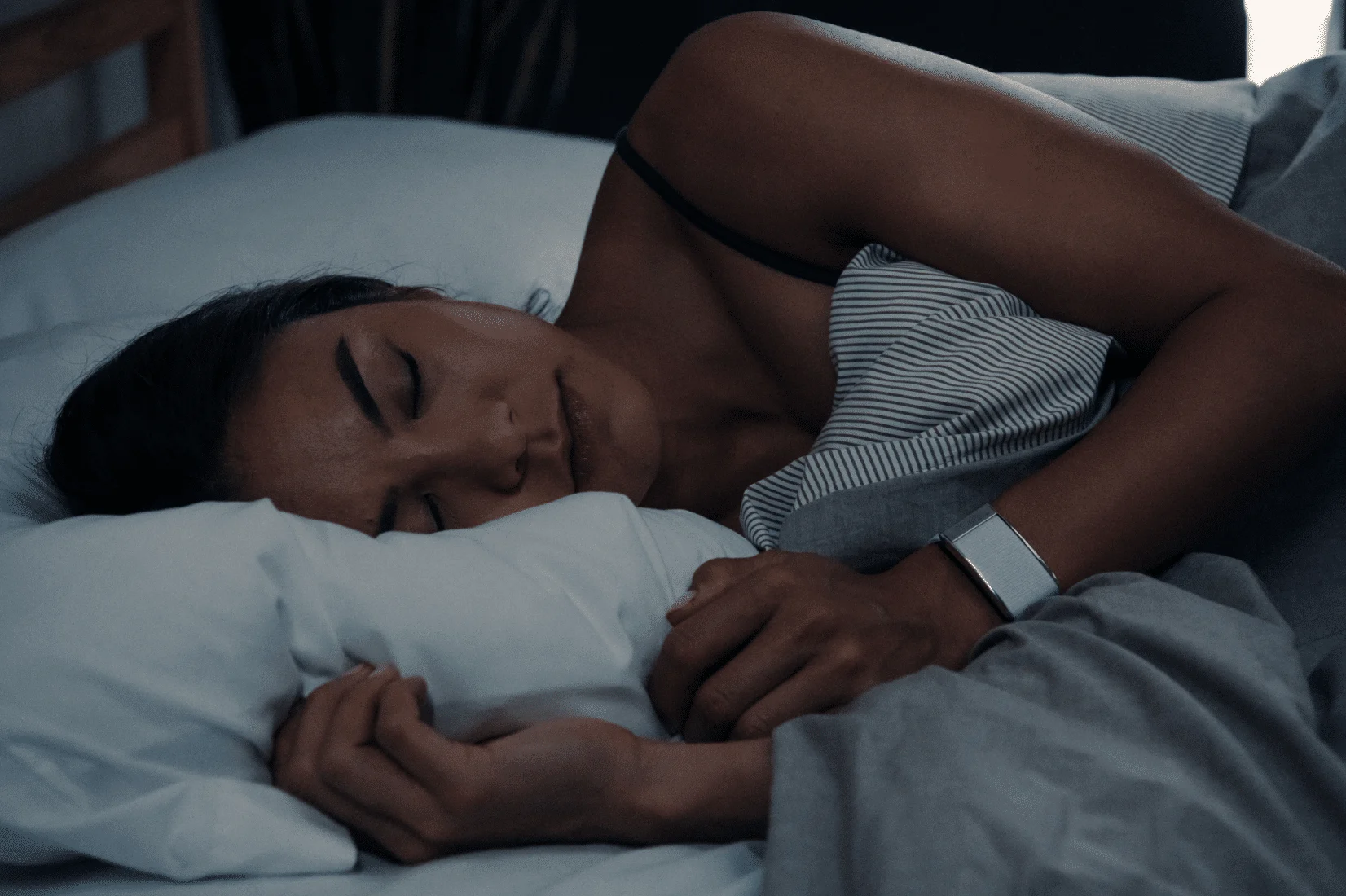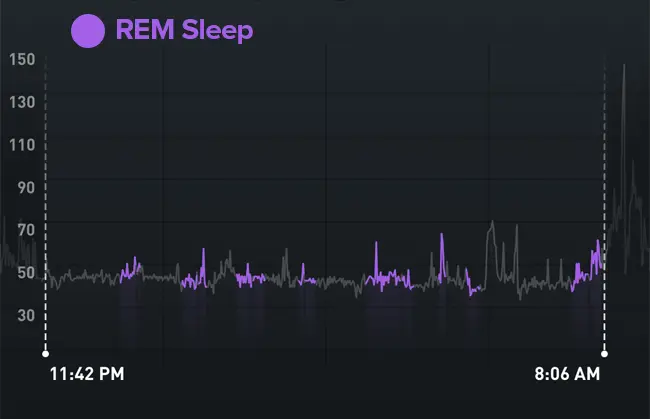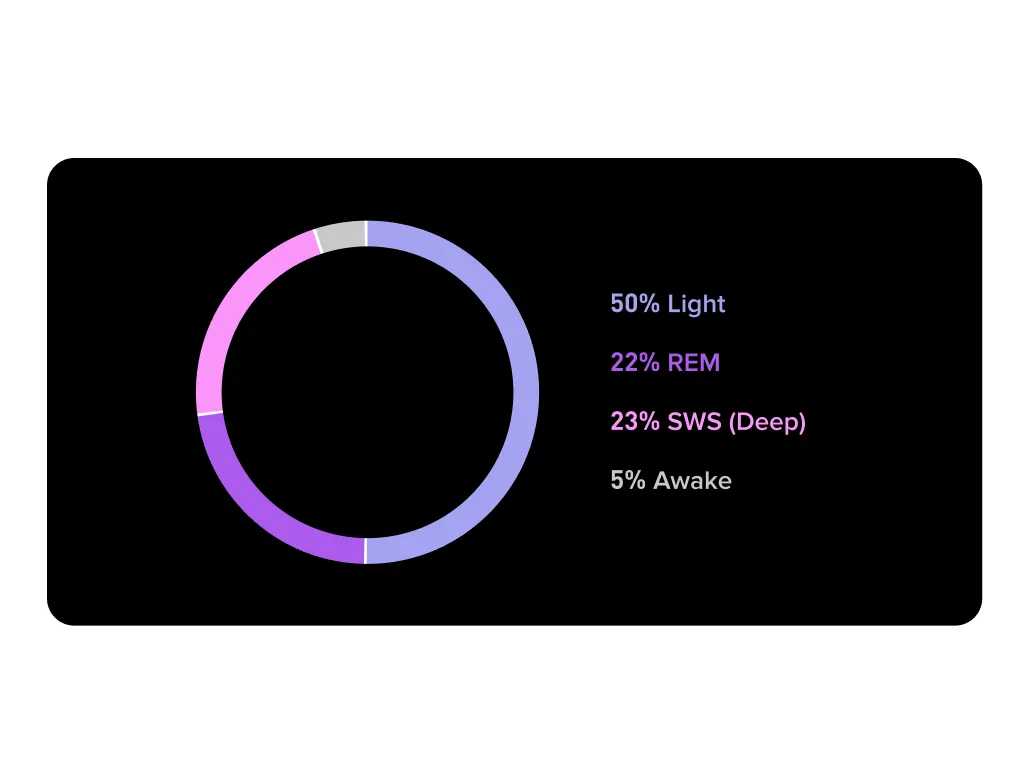Topics
- Article
- Sleep
Understanding Sleep Cycles and the Stages of Sleep

Sleep is a dynamic process. The average healthy adult will experience 3-5 sleep cycles per night. Within those cycles, there are 4 distinct sleep stages: Light Sleep, Deep/Slow Wave Sleep (SWS), Rapid Eye Movement (REM) Sleep and Wake.
Stages of Sleep: Light, Slow Wave Sleep (SWS), REM, Wake
Light sleep represents the physiological process taken to transition to deep sleep. Some of the restorative characteristics that define deep sleep occur in this phase, but with less frequency, as your body is more responsive to your environment in light sleep. In fact, there is a theory that light sleep exists to allow the body to be aware of its surroundings and to wake quickly in the event of a threat. Slow Wave Sleep (SWS), also known as deep sleep, is the time when your muscles repair and grow. During this stage the body produces 95% of its daily supply of growth hormones. As an athlete, training sessions break down muscle tissue so that it can rebuild and grow during slow wave sleep. REM sleep is when the brain is restored. It is at this time that ideas and skills acquired during the day are cemented as memories. As it relates to an athlete, any time you are practicing a technical skill, the actual consolidation and retention of that learning happens during REM sleep. Wake is included as a sleep stage because it is natural to be awake for brief periods many times in the night. These periods are known as arousals, or “disturbances” in the WHOOP app, and it is normal to experience anywhere from 10-20 per night. While they only last a few minutes and you’re not conscious of them, you can lose upwards of an hour of sleep in the Wake stage due to disturbances.
Heart Rate in a Typical Night’s Sleep Cycle Stages

Sleep is entered through light sleep, transitions to SWS within about 10 minutes, then to REM sleep somewhere around 90 minutes after falling asleep. An arousal will follow and a new sleep cycle will begin from there. As mentioned above, a normal night of sleep will contain 3-5 complete cycles, with more possible the longer you sleep.
Time Spent in Each Stage of Sleep
The amount of time a person will spend in each sleep stage varies night by night. In general, a healthy break down to aim for is the following:

Learn More: How Much Time Should You Spend in Each Stage of Sleep?
Analyzing Sleep Stages & Trends with WHOOP: Slow Wave Sleep vs REM
The sleep trends accessible on the WHOOP App give you the opportunity to unpack nighttime habits that either help or hurt your sleep efficiency. Now, you can also see your restorative sleep trends (your combined deep and slow wave sleep) over time for a closer look at how much you're getting and when. Looking for patterns like this can help you build routines that maximize your WHOOP recovery and improve your heart rate variability, one of the key metrics for determining your body’s readiness to perform each day.

Tips for Getting Great Sleep & Improving Sleep Cycles
While there is no simple formula for boosting the amount of time you spend in any of the stages of sleep, there are behaviors you can adopt to give yourself the best chance at an efficient night of sleep. Here are some good practices we’ve learned from the leading studies on sleep science:
- The darker your room, the better you sleep. Light influences the wake stage of sleep so the darker you can get your room, the more time you will get in the restorative stages.
- Set your room temperature at or around 68 degrees. You will fall asleep quicker when your bedroom is slightly cool.
- Your bed is not a multi-use space. The more you can train your body to associate your bed with sleep, the more adept you will be at falling asleep in that space. As such, avoid work and leisure time spent in your bed.
- Screens are stimulating and keep you awake. Avoid using your phone or computer in bed, screen time makes it more difficult to fall asleep.
- Set a cut-off time for caffeine intake. Caffeine has a lingering presence for many hours after consumption. For greater sleep efficiency, consciously refrain from caffeine consumption at least 4 hours before bed.
- Plan ahead when consuming alcohol. Just as caffeine intake impacts the body hours after consumption, so too does alcohol. Keep this in mind on a night out so that your sleep performance doesn’t suffer.
- Fall asleep and wake up at similar times each day. We call this sleep consistency, and studies have shown it can improve the quality and efficiency of your time in bed (check out The Circadian Rhythm Sleep Hack).
- Listen to the WHOOP App Sleep Planner. Based on your physiological data and natural circadian rhythm, the Sleep Planner makes daily recommendations for your optimal time to go to bed at night and get up the next morning. More: Sleep Tips from the 100 Best Sleepers on WHOOP